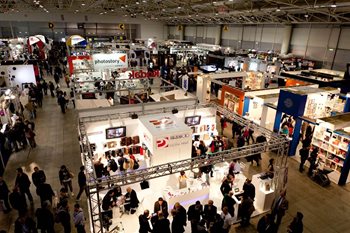Getting connected: organizer hacks
Planning is at the core of all major business events and executing the perfect conference can require a lot of prior knowledge. Technology has undoubtedly streamlined these processes, taking over from the older, paper-based systems. Platform-as-service event technology - a system of cloud computing devices which creates a space for users to work in real-time together - has proven invaluable for organizers, and beacon technology is already leading towards a shift in connectivity at industry events.
The beacon, a small device, connects with a mobile app and delivers content based on the geographical location of the connected user.
Apple unveiled their iBeacon in 2013, designed to provide interactivity between connected devices, such as welcoming attendees or facilitating live audience polls. Everything from lunchtime menus to table plans can be shared this way, creating instantaneous communication with the audience. Beacons are used for a whole host of reasons. Romania’s largest festival, Electric Castle, used beacons and connected devices to stage a mass treasure hunt. When it comes to conferences, beacons can help to deliver content efficiently, improve audience networking and reduce waiting times in venues; allowing organizers to get creative with their exciting, adaptable features.
Making a long-lasting impact
Industry events can usually mean trying to take in a large quantity of information, with only a few breaks to process the breadth of topics covered. Now, many conference events utilize audiovisual technologies, providing live streams through social media platforms, which can also be used to create time-lapses and keynote recordings. This content can be distributed to event attendees afterwards to maximize the longevity of the ideas covered in the event.
Similarly, virtual and augmented reality can offer venue tours, facilitate virtual attendants and deliver remote speeches. This kind of technology provides an immersive experience in the conference setting, and also adds clarity to engagement rates throughout the audience. The immediacy of audiovisual aspects contribute to the real-time elements of sharing ideas and concepts, even from beyond the conference itself.
Getting involved with digital apps
Developers are being met with an increasing demand for the creation of digital apps, ahead of industry events. Apps of this nature are used on a regular basis, and they’re a great way of communicating with attendees ahead of and during the event. They provide a portal for event hosts to distribute useful information, adding to the modern conference experience, providing; conference agendas, check-ins, hotel recommendations for commuters and often messaging options. Some event planners are using these apps as a loyalty scheme, wherein attendance at an event is recorded and rewards may be given after a certain number of conferences. This technology has also served to change the conventional conference, building them into unique communities based on their point of interest.
Investing in regenerated spaces
Many conference venues are looking to adapt their existing spaces, transforming them into something which breaks from convention and provides a refined experience for delegates to engage with. The recently refurbished Woodland Centre, a leading conference venue in Milton Keynes, utilizes an array of new technologies, including advanced optical front projectors, digital flipcharts and wireless HDMI facilities. The venue has channeled a £3m investment (approx. $3.7m) into providing an immersive, digitized experience for conference attendees.
From adjustable lighting to panoramic display screens, the resort is finding innovative ways to support events in all sectors. These new technologies are shaping the future of business conferences and events, adding a new dimension of engagement for attendees and enhancing the quality of learning.
Access the latest business knowledge in Marketing
Get Access




Comments
Join the conversation...